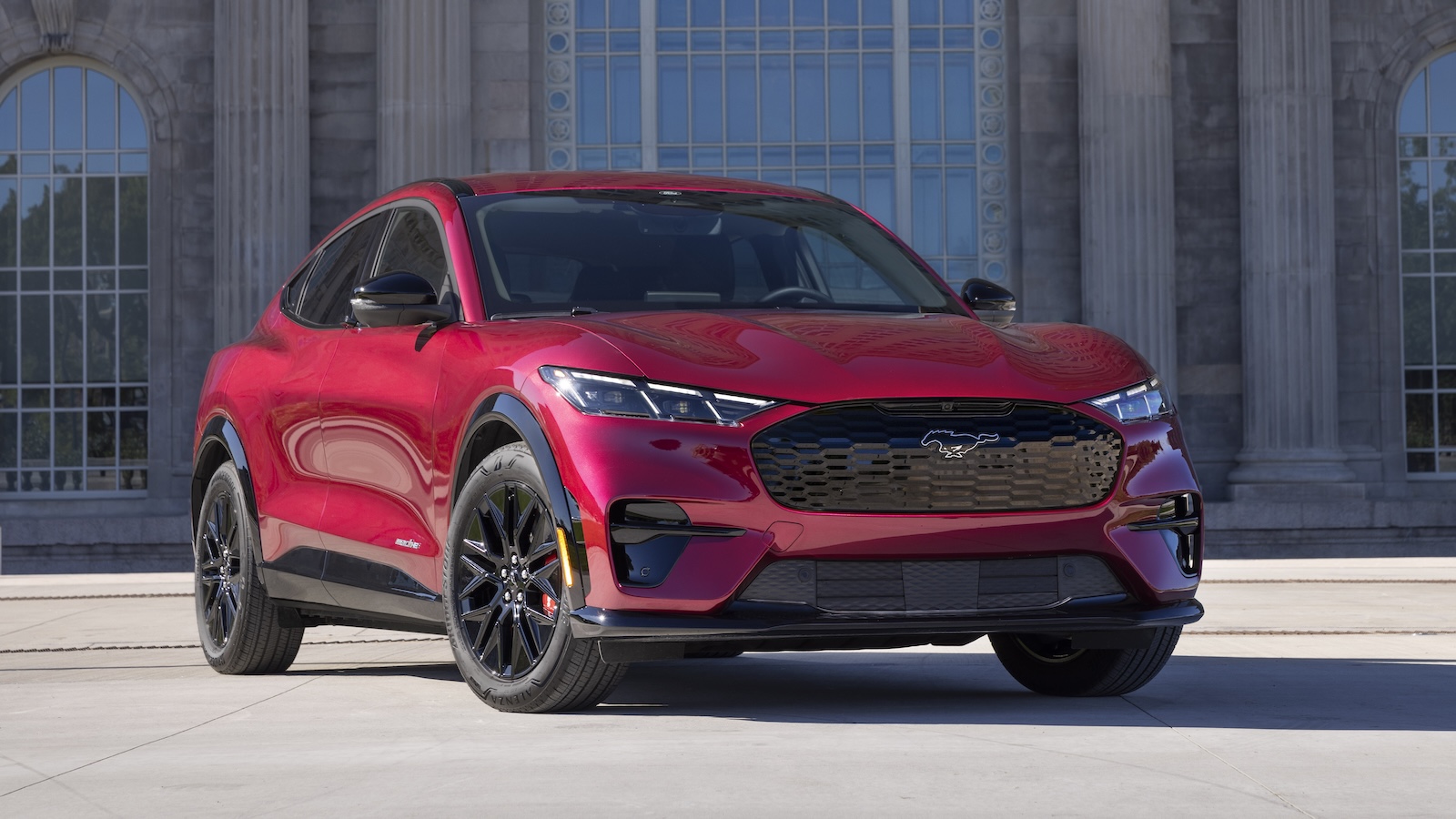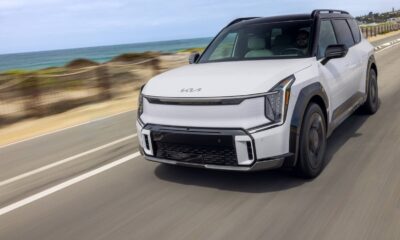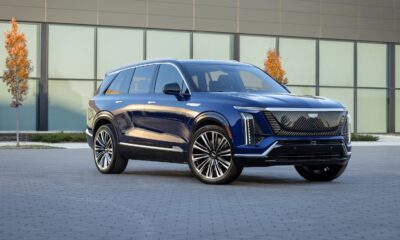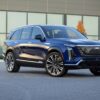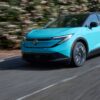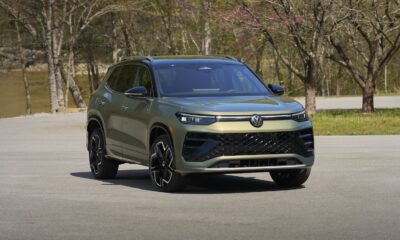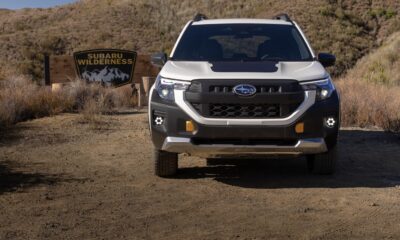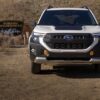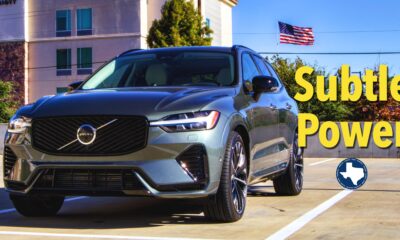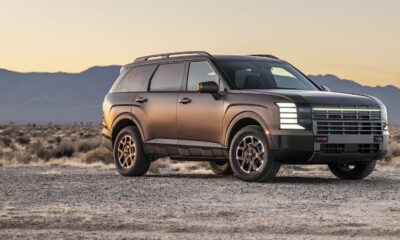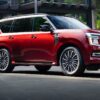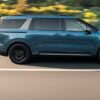Car Reviews
FORD MUSTANG MACH-E – EFFICIENT AND EXCITING
FORD MUSTANG MACH-E
EFFICIENT AND EXCITING
Let’s agree on this: These are interesting times. Obviously, in an automotive column I’ll limit myself to the automotive context. If you can overlook the impact of tariffs and supply chains, along with the on-again/off-again pattern of EV incentives, the EV space would seem to be settling into a somewhat predictable segment, with greater selection at entry-level price points, improved range and more design variety. It may not be the best of times, but it’s far from the worst of times. And with that, Ford’s Mustang Mach-E may not be the best small SUV EV, but it’s one of the best.
First shown in the fall of 2019 and introduced a year later as a ’21, Ford’s Mustang Mach-E raised an eyebrow (or three) at its intro, given that it came with a Mustang moniker applied to a 4-door hatch. Mustangs – as you’d know – don’t have four doors, and while they may have featured four cylinders, six cylinders or explosive V8s, never – EVER – have they come with electric power. Although little more than a nod to the marketing mojo of ‘Mustang’, I frankly like the Mach-E’s footprint better than I like the swollen dimensions of the 2-door ponycar. In fact, ‘pony’ is a misnomer; the current iteration of the 2-door Mustang looks more like a Clydesdale than small horse.
With an overall length of 185 inches atop a wheelbase of 117 inches, both front and rear overhangs are minimal, and that’s in sharp contrast to those gasoline crossovers based on front-wheel drive/all-wheel drive platforms with their significant front overhangs. In profile what the EPA describes as a small SUV has an almost fastback roofline, and while I typically don’t like the coupe-like treatment on more conventional SUVs, this seems to work for the Mach-E. Although the roofline tapers as the greenhouse narrows, outward visibility – at least from the driver’s perch – remains good.
Mustang design cues, such as they are, are limited to the front fascia (after a fashion), rear taillights and some side sculpting. Inside, you’re most immediately confronted by the Mach-E’s infotainment screen, which is vertically mounted and measures 15.5 inches. HVAC controls are separate and mounted beneath the touchscreen, but essentially everything else having to do with either info or entertainment is within the screen itself. Obviously, you can’t miss it – and once acclimated to its menu you’ll probably find it intuitive. And if you don’t, there’s always YouTube…
The feel behind the wheel represents a nice contrast with the previous week’s Subaru Crosstrek Hybrid and my wife’s ride, a ’23 Grand Cherokee plug-in. In size and space the Mach-E is much closer to the balanced proportions of the Subaru, not nearly as cavernous as the Jeep. To that end the Mach-E is easier to park than the GC, while feeling more substantial than the Crosstrek; that’s undoubtedly helped in no small part by its 4,700 lbs. of unladen curb weight.
That curb weight includes – on our test Mach-E – two motors delivering a total output of 370 horsepower and 500 lb-ft of torque. Ford claims a 0-60 of 4.2 seconds, and in my week behind the wheel I saw no reason to doubt it. Merging into freeway traffic is done with no anxiety, and as with other EVs I’ve driven, the overall sensation going down a roadway is absolutely without drama. Within Ford’s trim ladder you’ll find better acceleration via the GT trim – reducing 0-60 to 3.3 seconds. But I’d argue that in none of the trims, including the base RWD model’s 5.6 seconds to 60, do you need to get there faster.
But you do need to get there, and you’re helped in that with the optional extended range battery, which – when packaged with the 225/55-19-inch tires – adds $4K to the base MSRP of $43K. That gives you a claimed 300 mile range, although on Level 2 charging I only saw 275 miles. Regardless, the range guidance never dropped precipitously, and within our week of driving those waves of anxiety stayed away. More range – of course – is coming to the industry, but with the softening of EV demand those resources to extend range for BEVs may be diverted.
Our test Premium trim with eAWD had almost $10K in options, for a total window sticker of $54,930. With the discontinuation of a Federal EV tax credit most OEMs are attempting to sweeten the deal with either their own purchase incentives or via special lease programs; in short, you won’t be assuming the full load of the Monroney. But then, neither will Trump’s team be lightening that load.
In building my Mach-E, I’d probably opt for a minimally-equipped Select trim with rear-wheel drive. After incentives – at the time of this writing – this tire kicker would be looking at a purchase of $35K (plus tax, title and license) or a lease of $337 per month (for three years) with what is typically paid out of pocket. Given the pace of improvement in the EV space, I’d probably lease. And if Ford isn’t offering 500 miles of EV range at the end of that lease I’d probably buy it. And drive it until Ford does have 500 miles of EV range.
It’ll happen. We just don’t know when…



